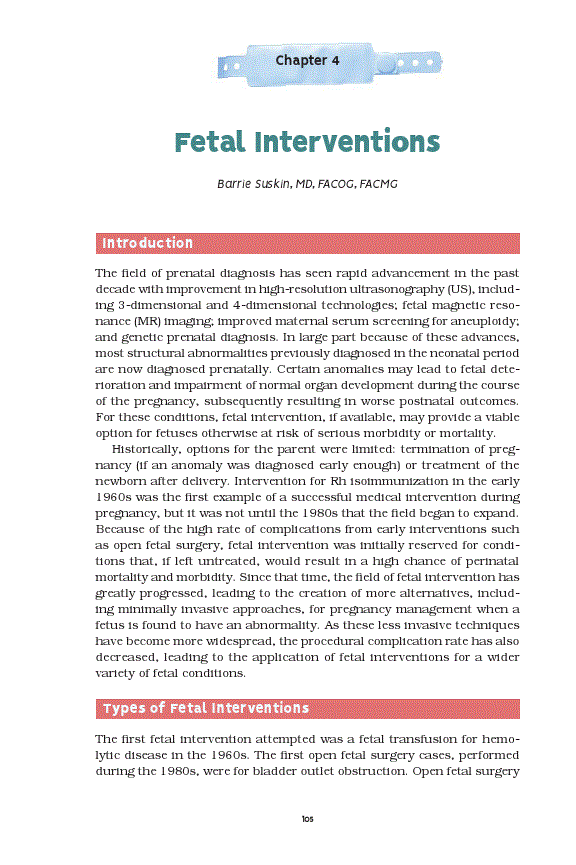The revised and updated second edition covers practical approaches to caring for healthy and high-risk infants. Available for purchase at https://www.aap.org/neonatalogy-for-primary-care-2nd-edition-paperback/
Chapter 4: Fetal Interventions
-
Published:January 2020
Barrie Suskin, MD, FACOG, FACMG, 2020. "Fetal Interventions", Neonatology for Primary Care, Deborah E. Campbell, MD, FAAP
Download citation file:
The field of prenatal diagnosis has seen rapid advancement in the past decade with improvement in high-resolution ultrasonography (US), including 3-dimensional and 4-dimensional technologies; fetal magnetic resonance (MR) imaging; improved maternal serum screening for aneuploidy; and genetic prenatal diagnosis. In large part because of these advances, most structural abnormalities previously diagnosed in the neonatal period are now diagnosed prenatally. Certain anomalies may lead to fetal deterioration and impairment of normal organ development during the course of the pregnancy, subsequently resulting in worse postnatal outcomes. For these conditions, fetal intervention, if available, may provide a viable option for fetuses otherwise at...




